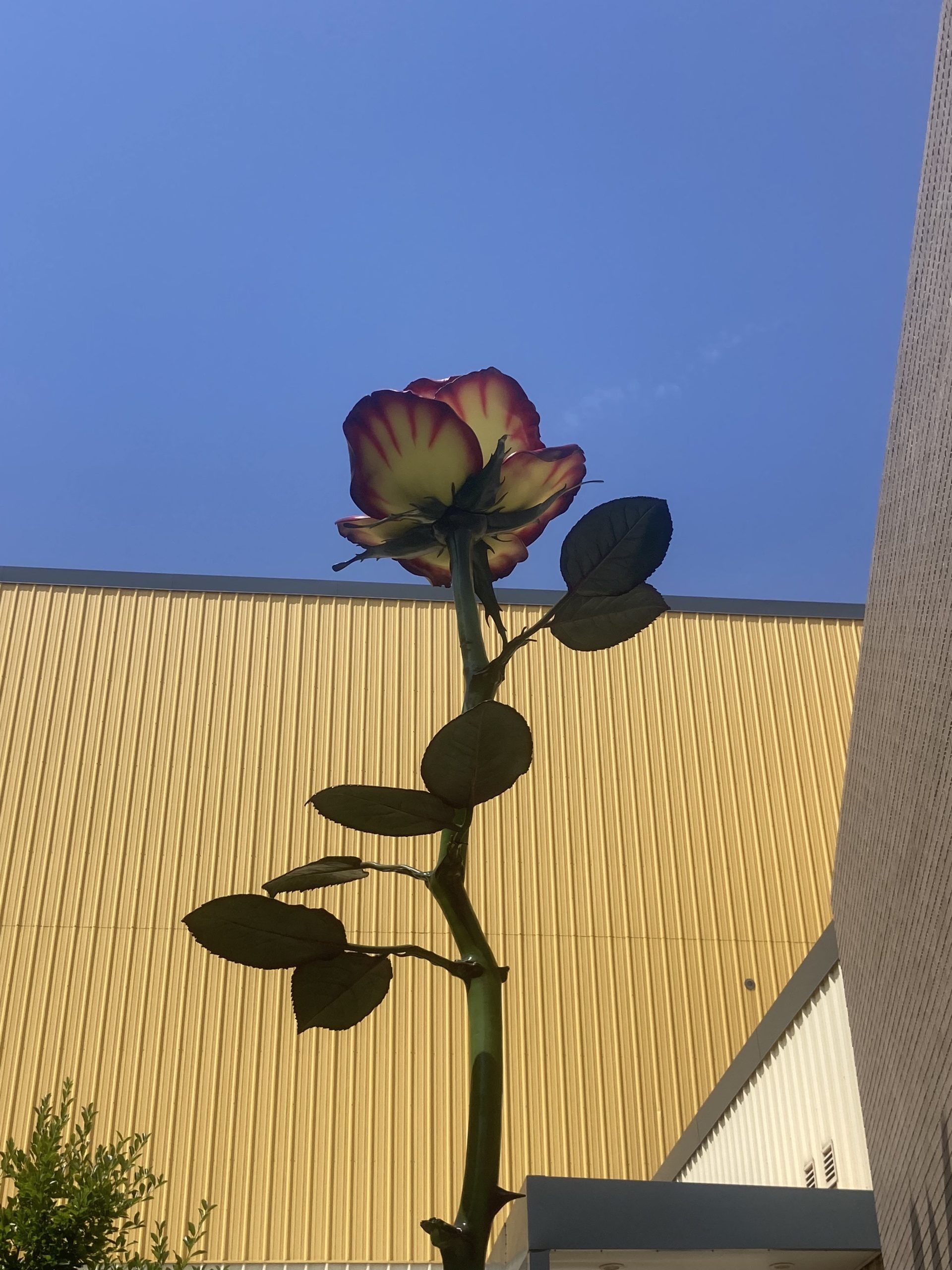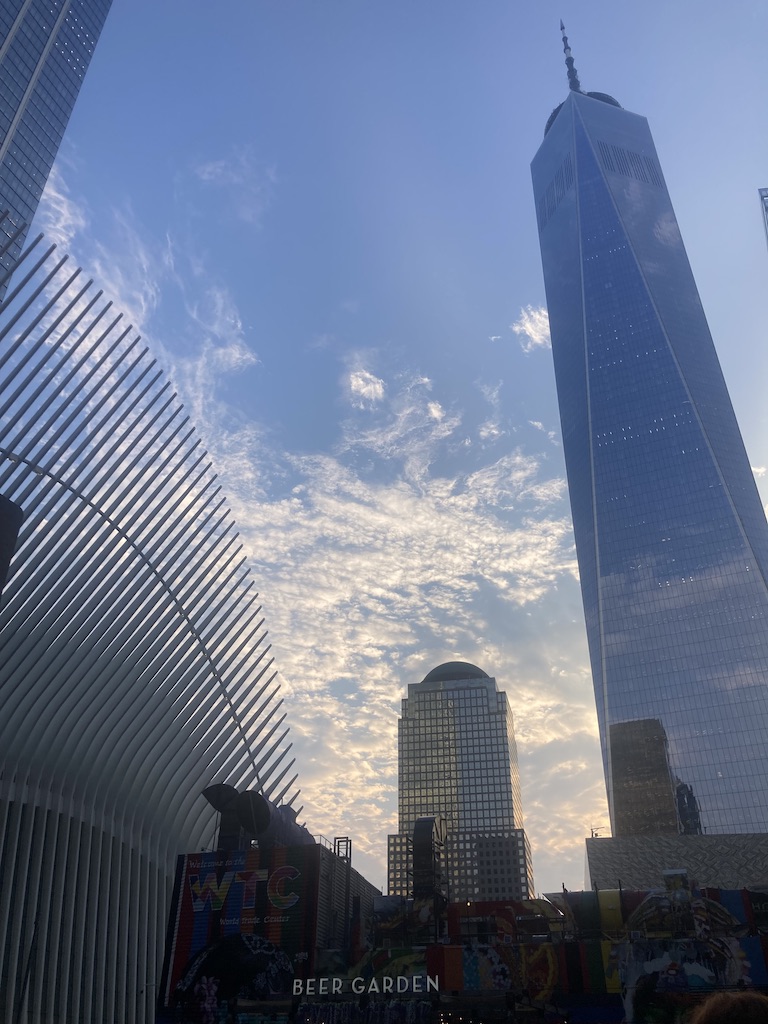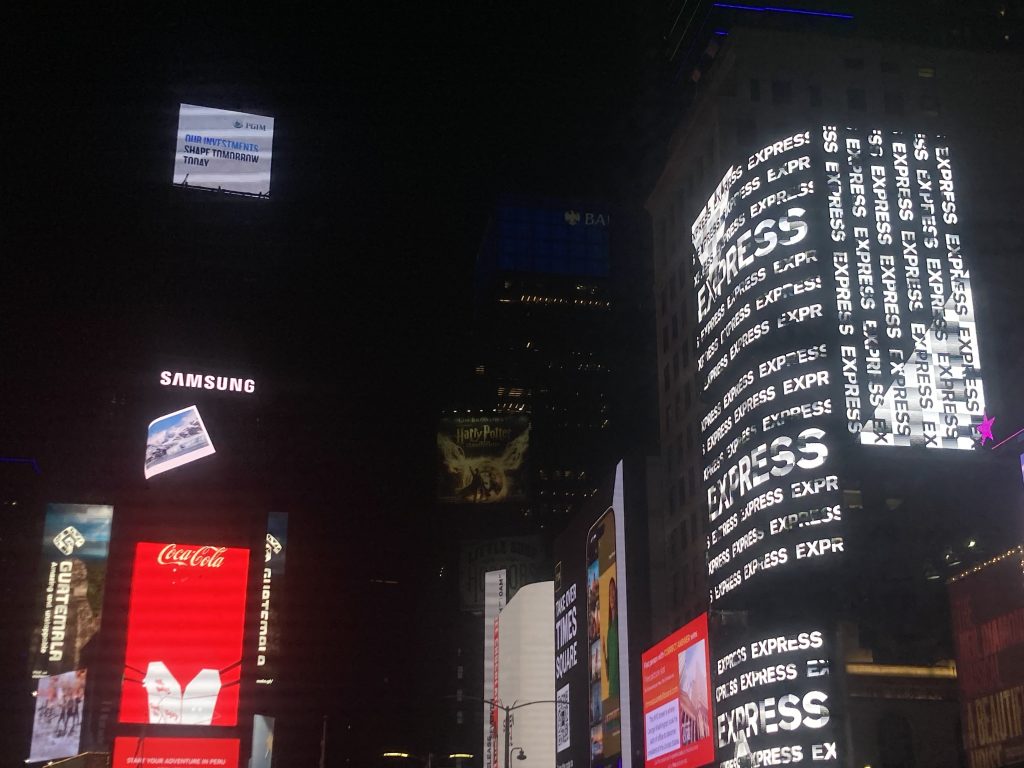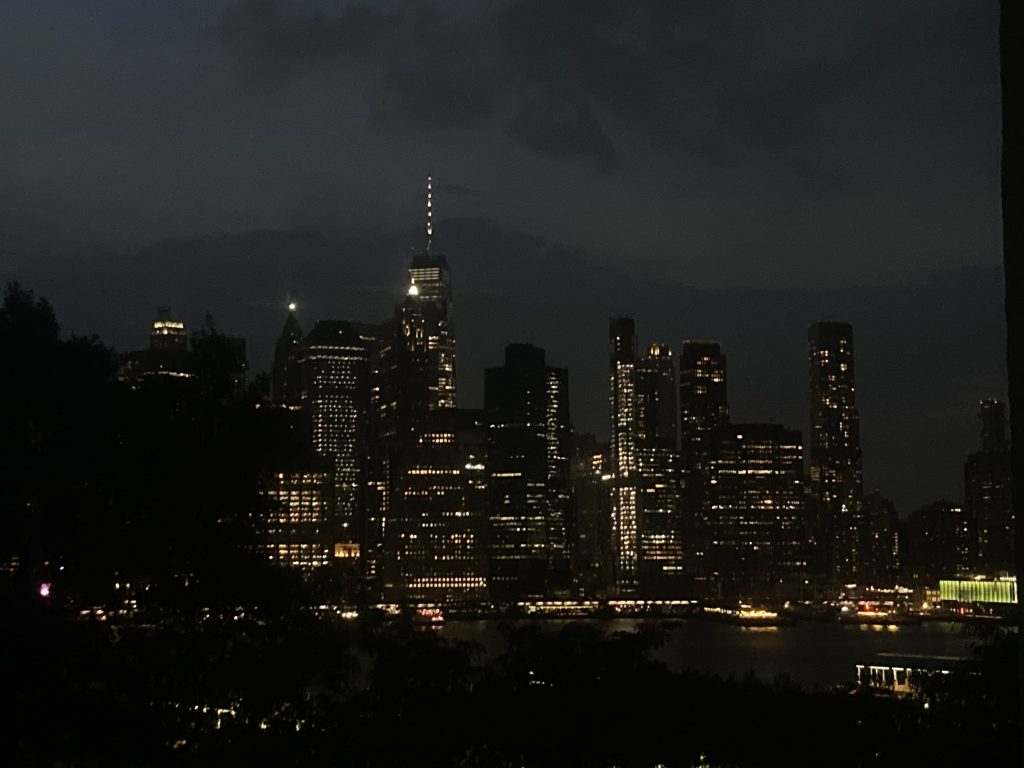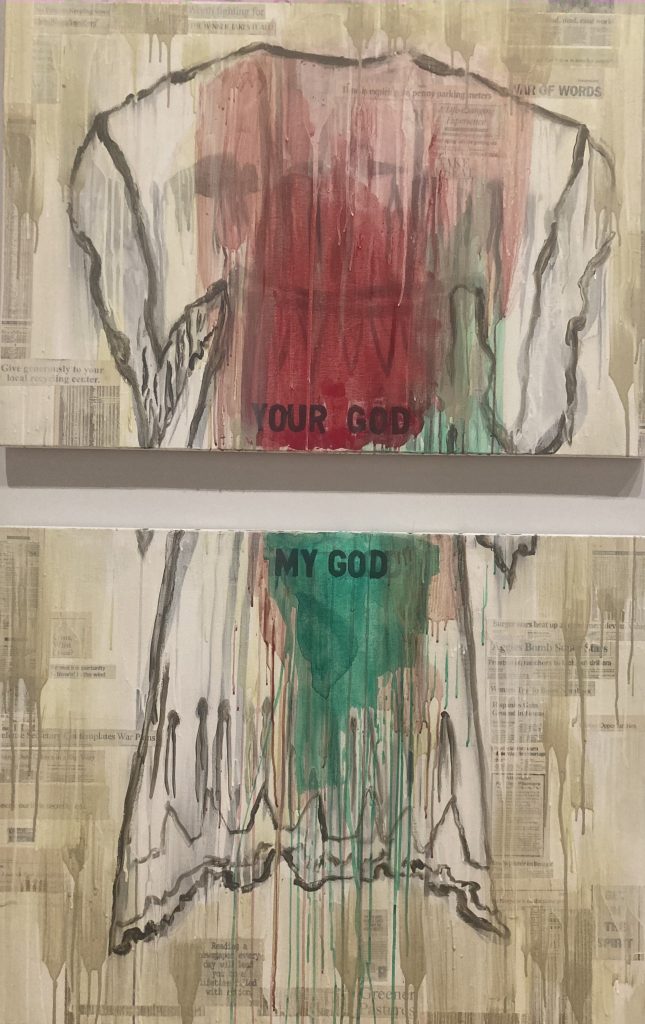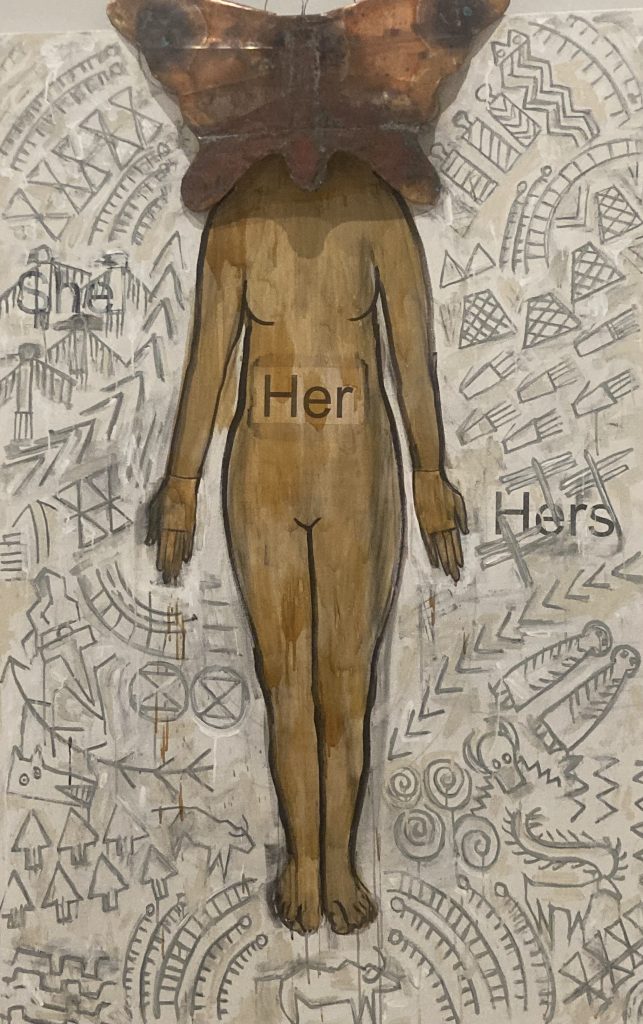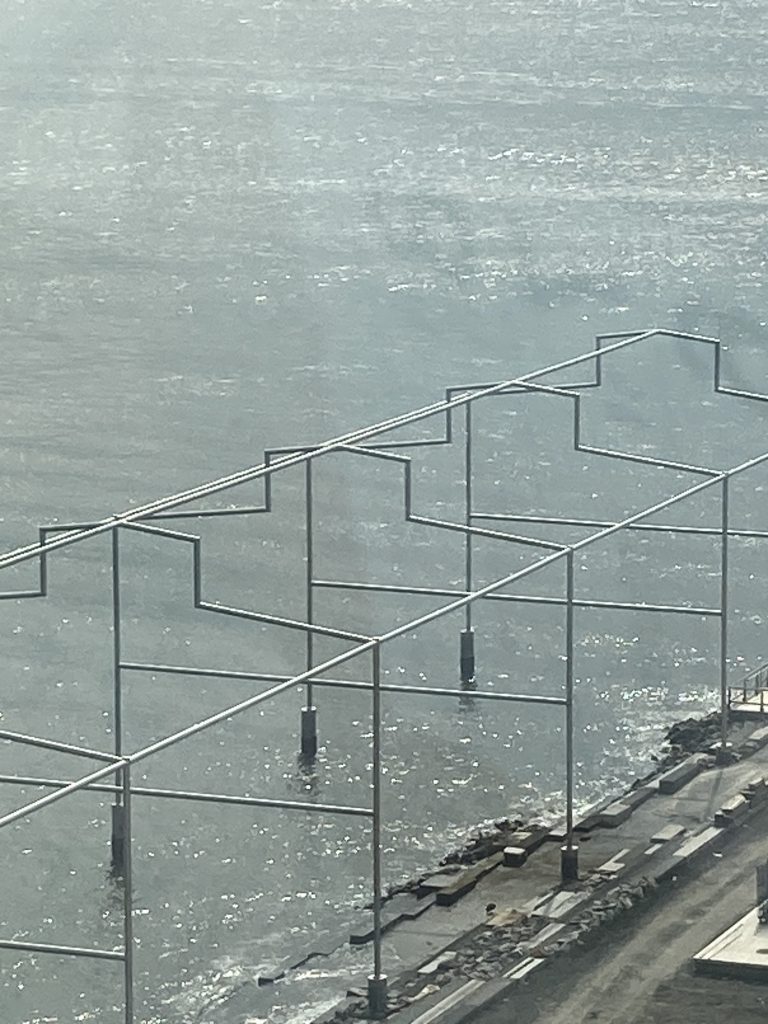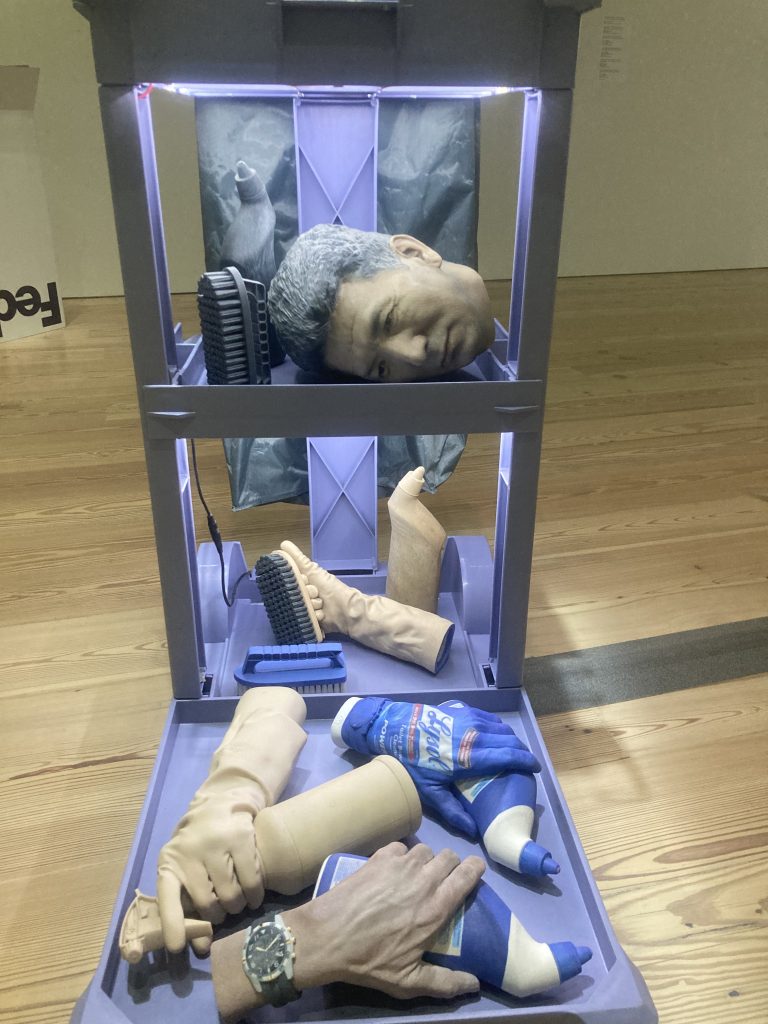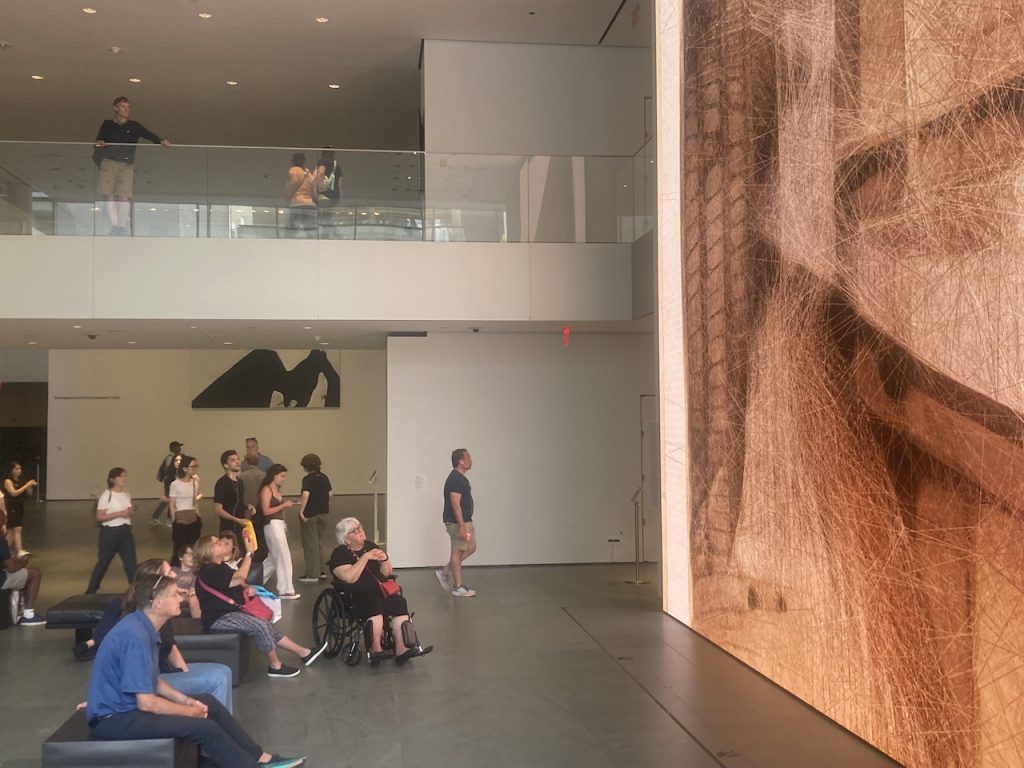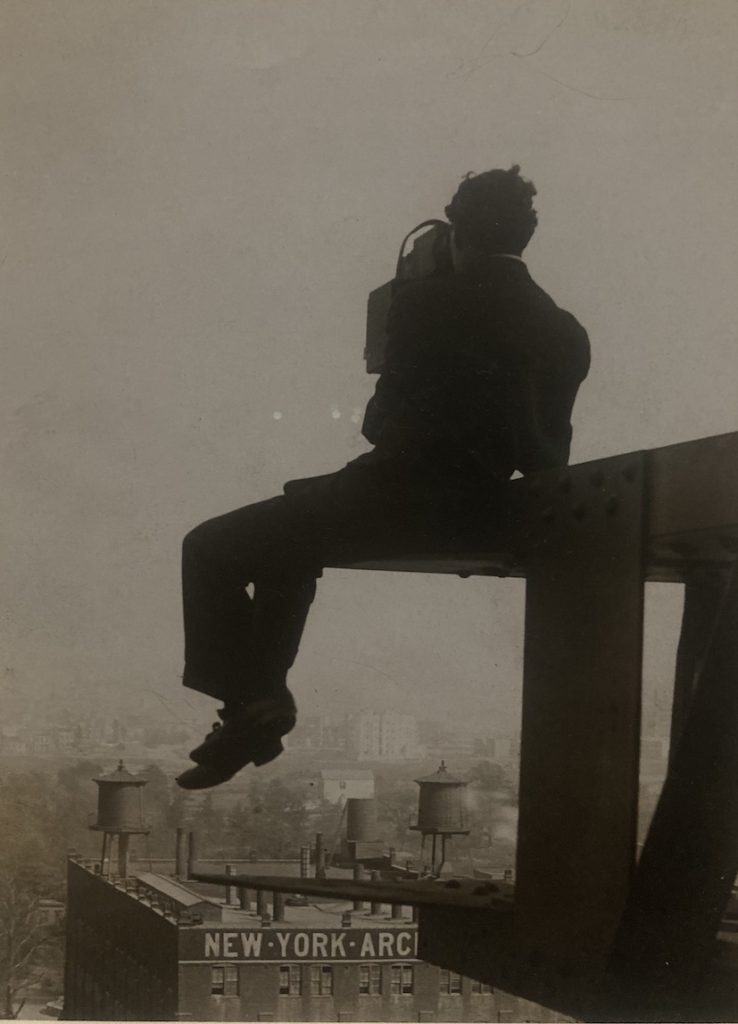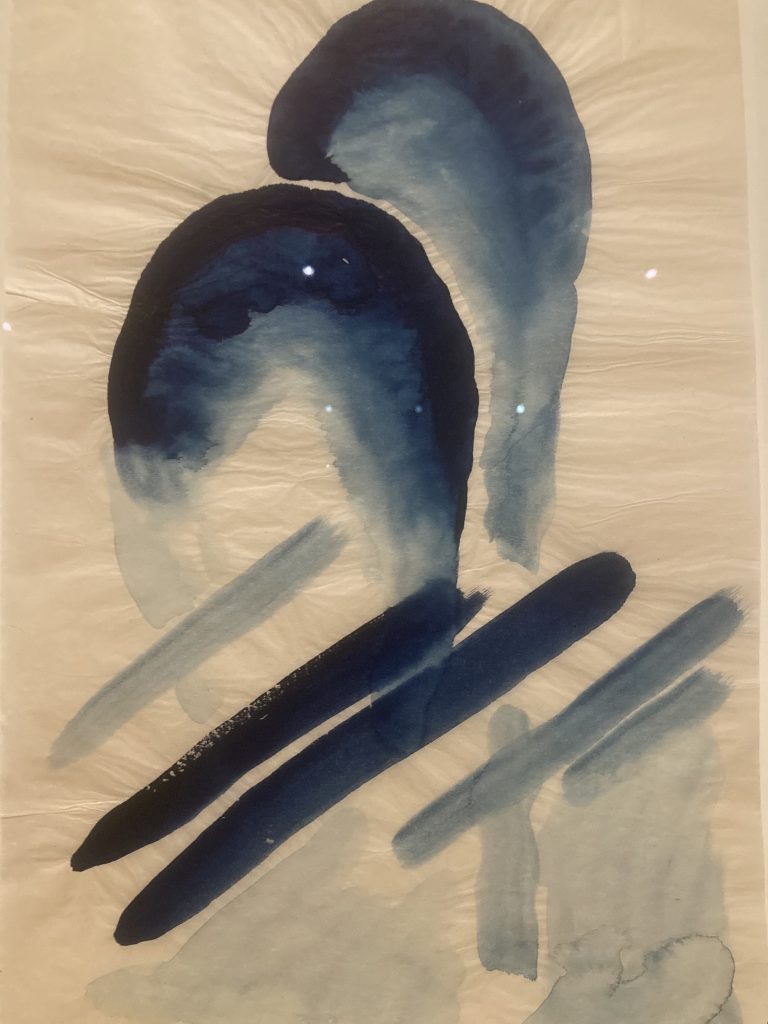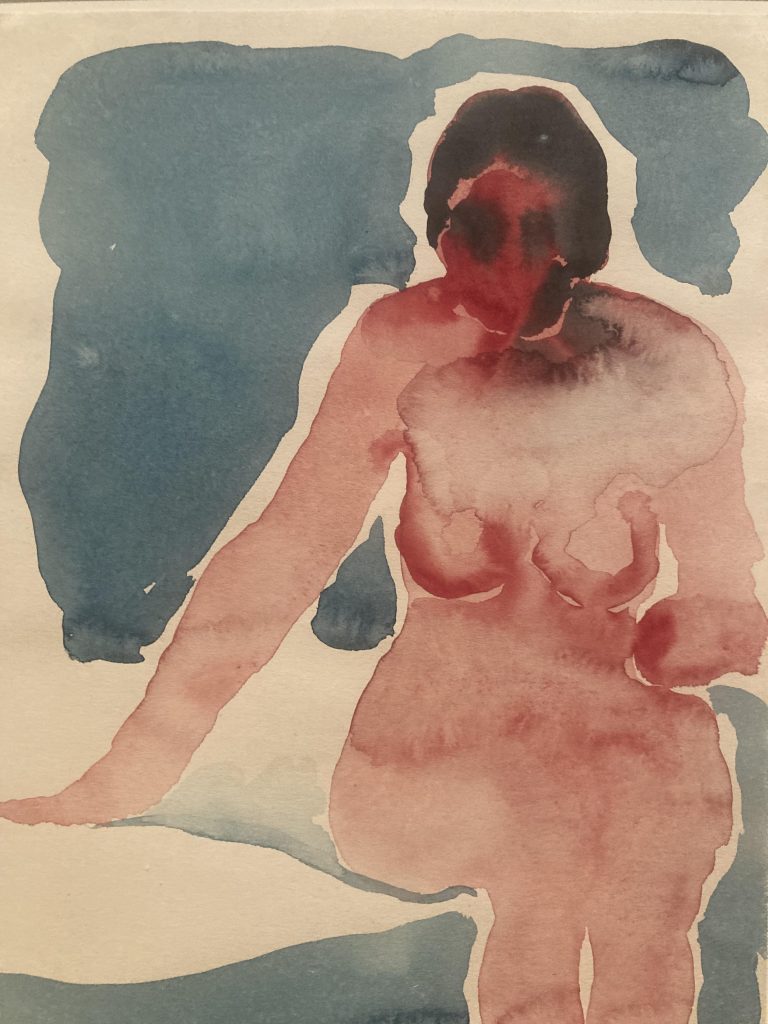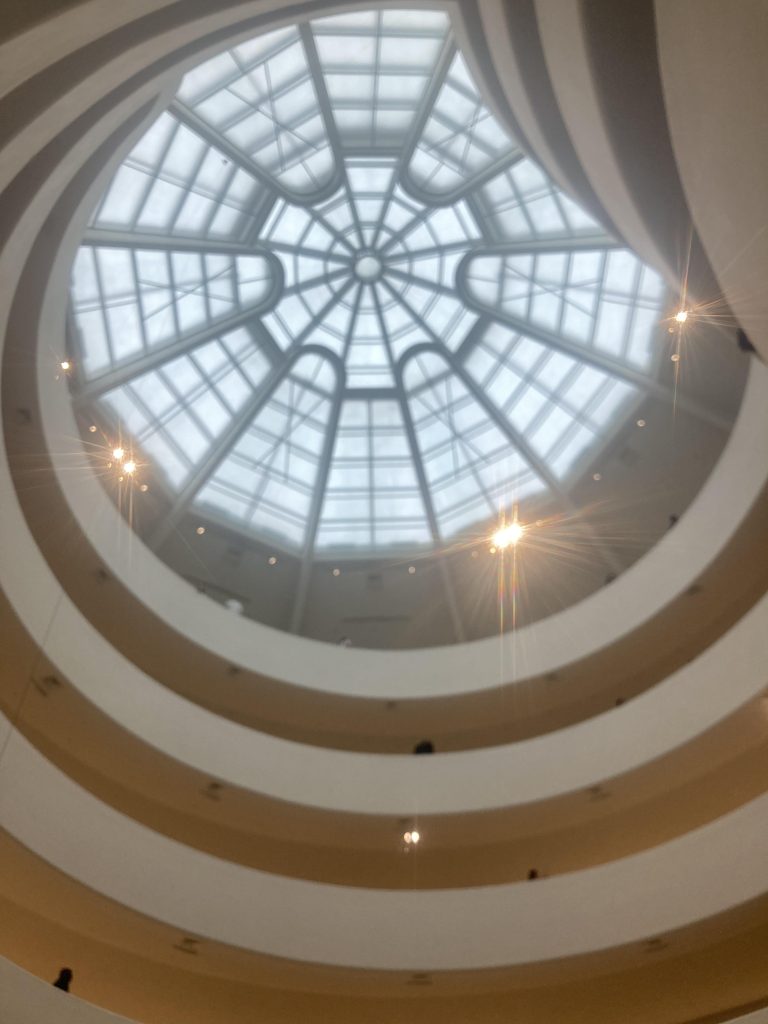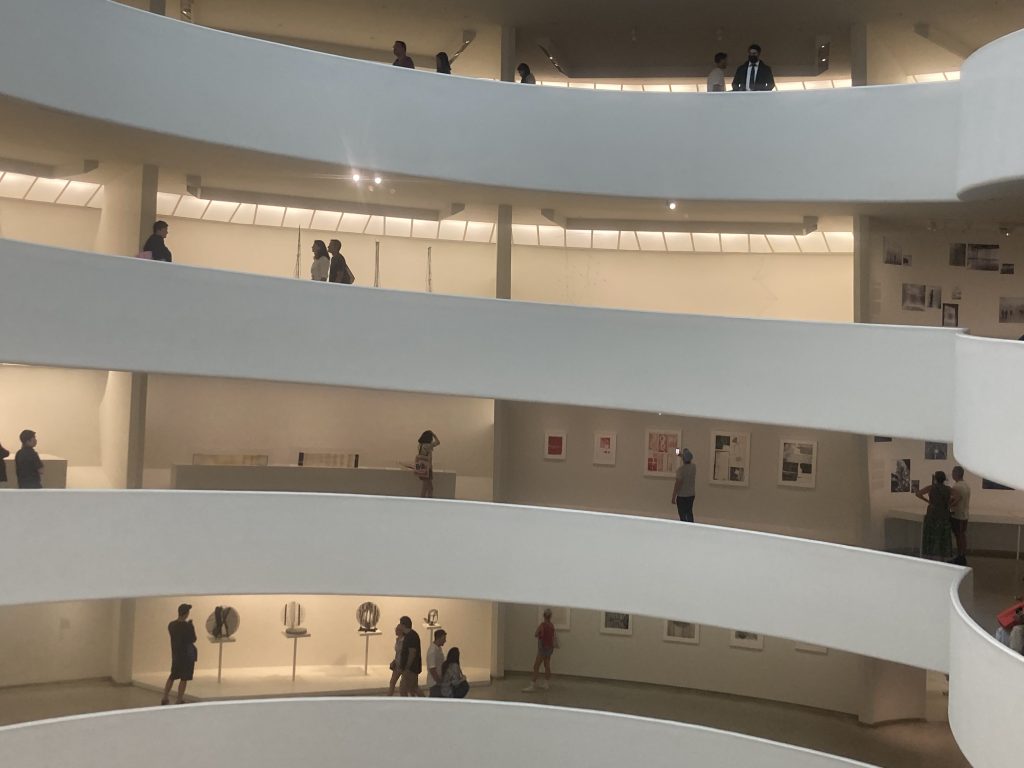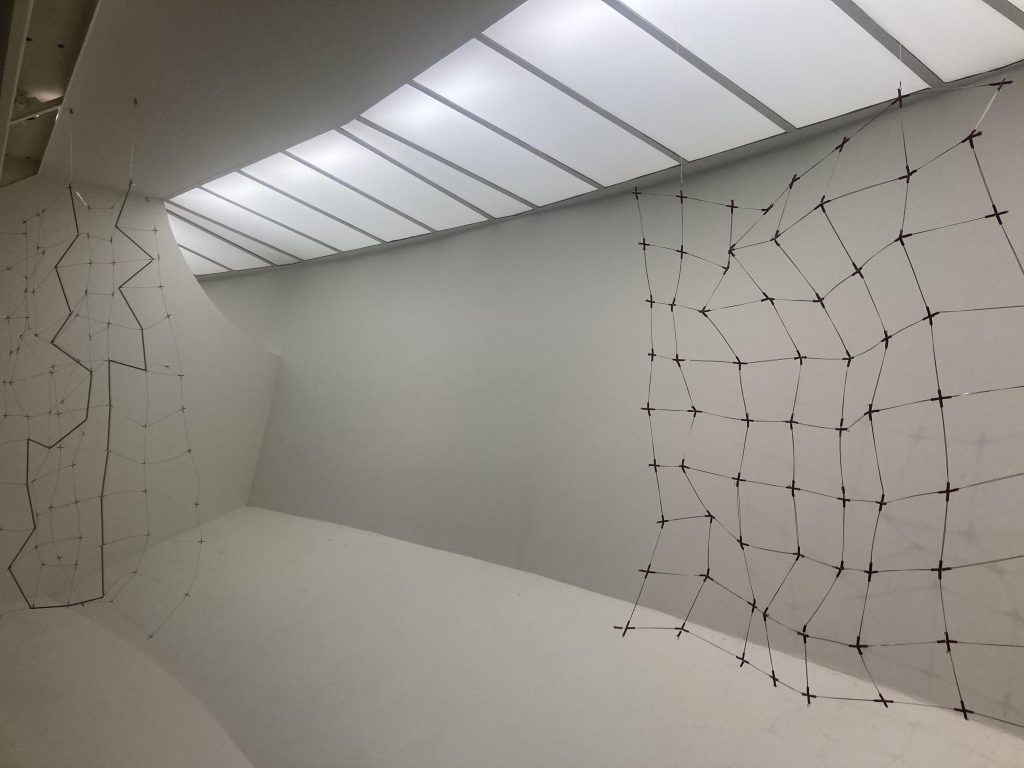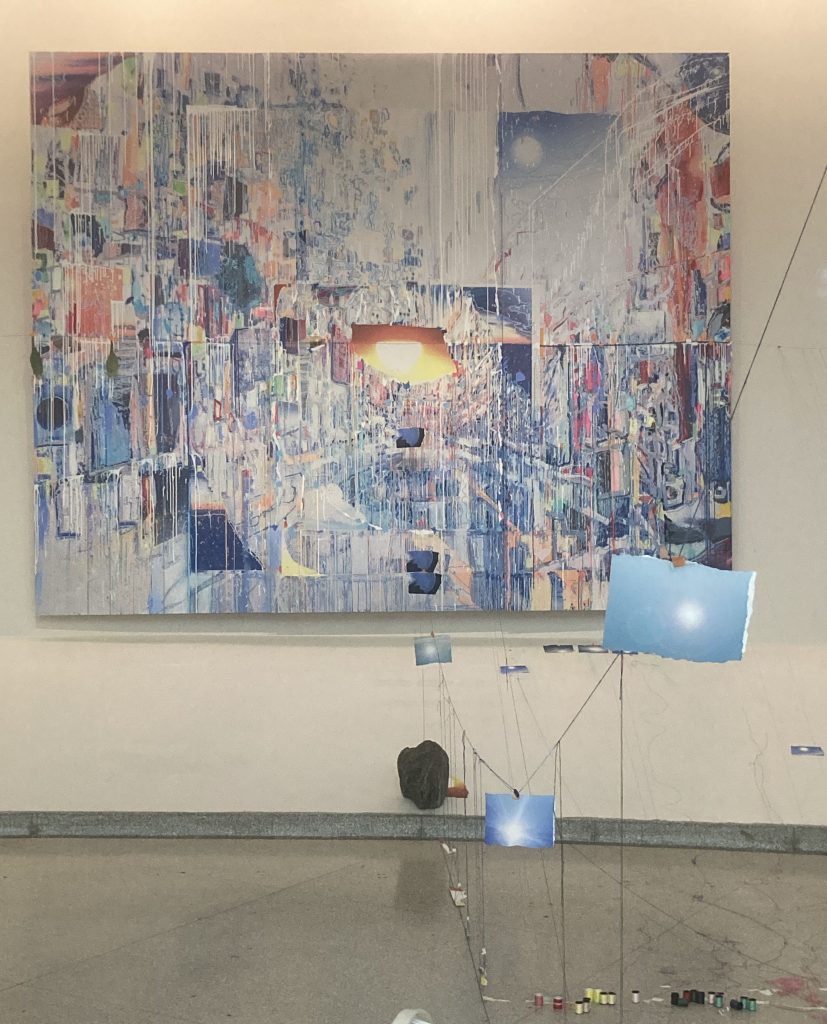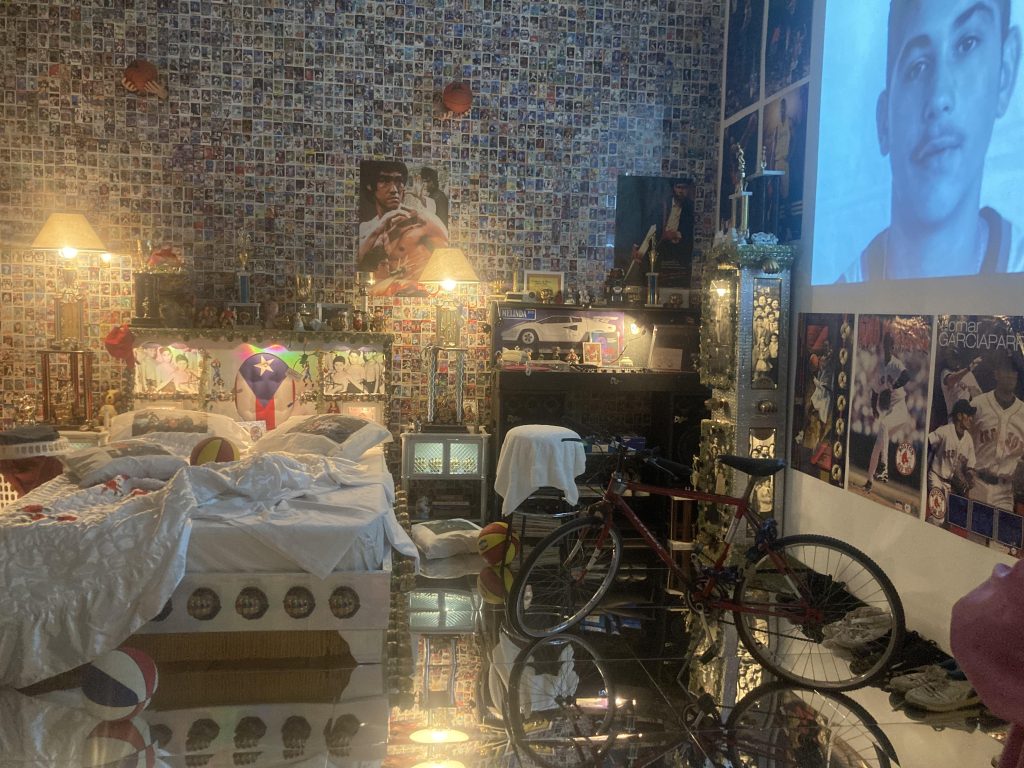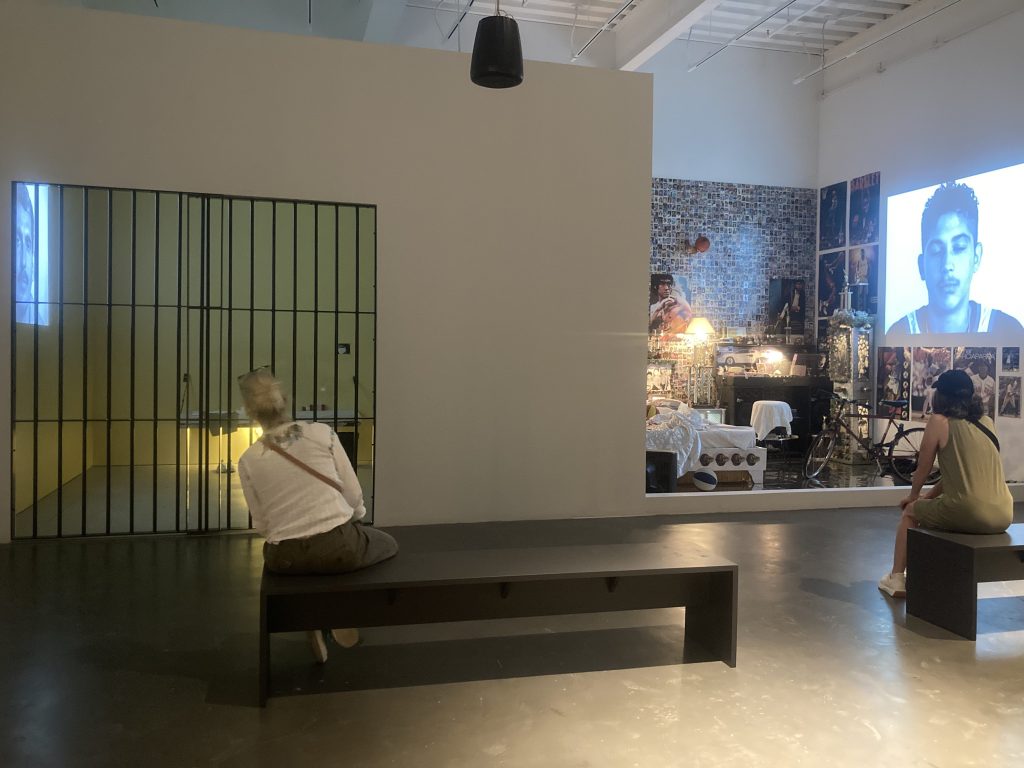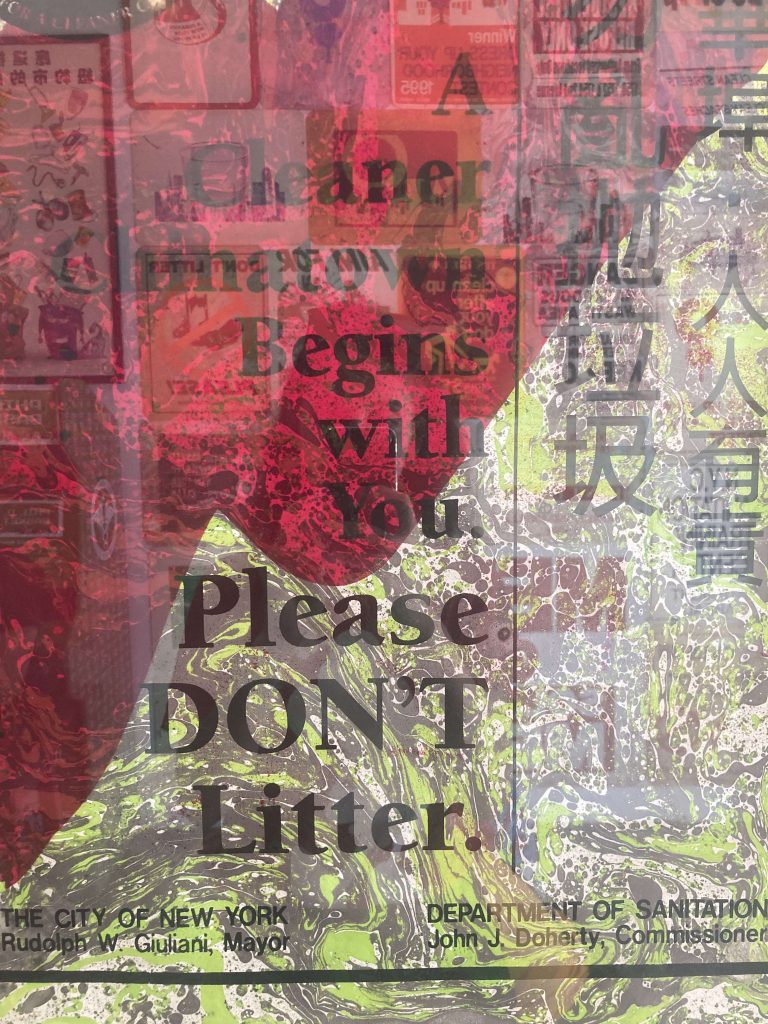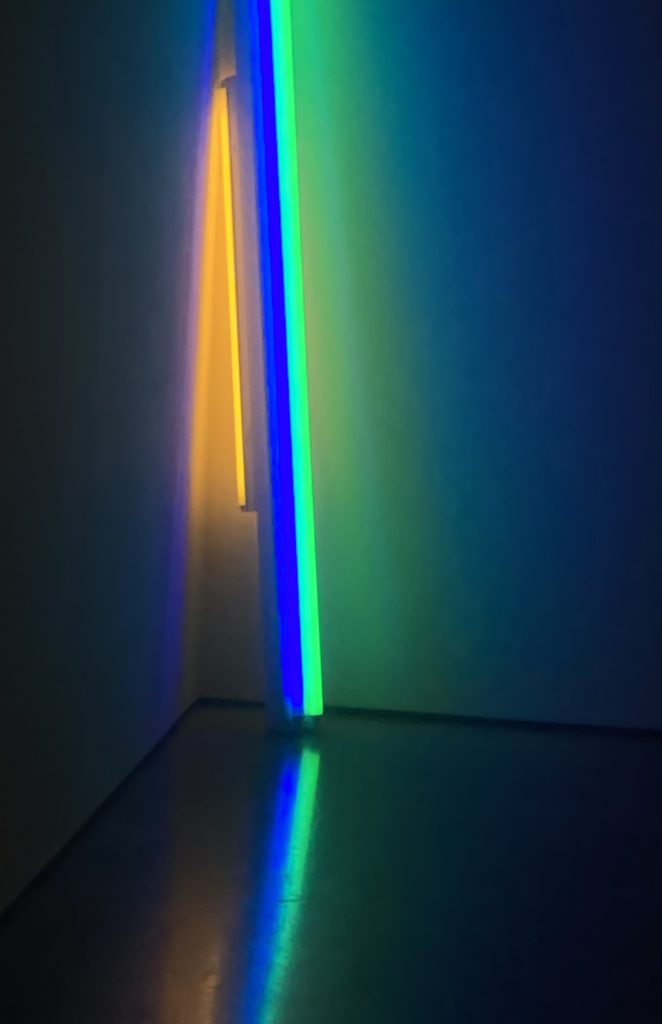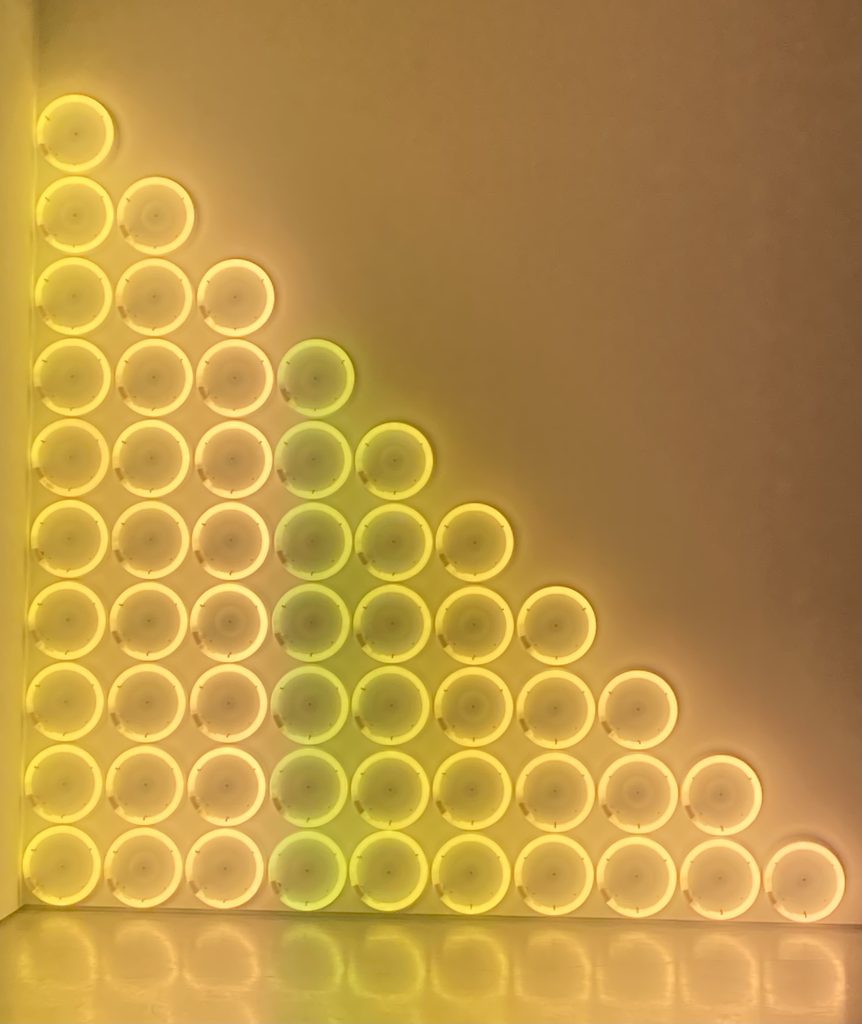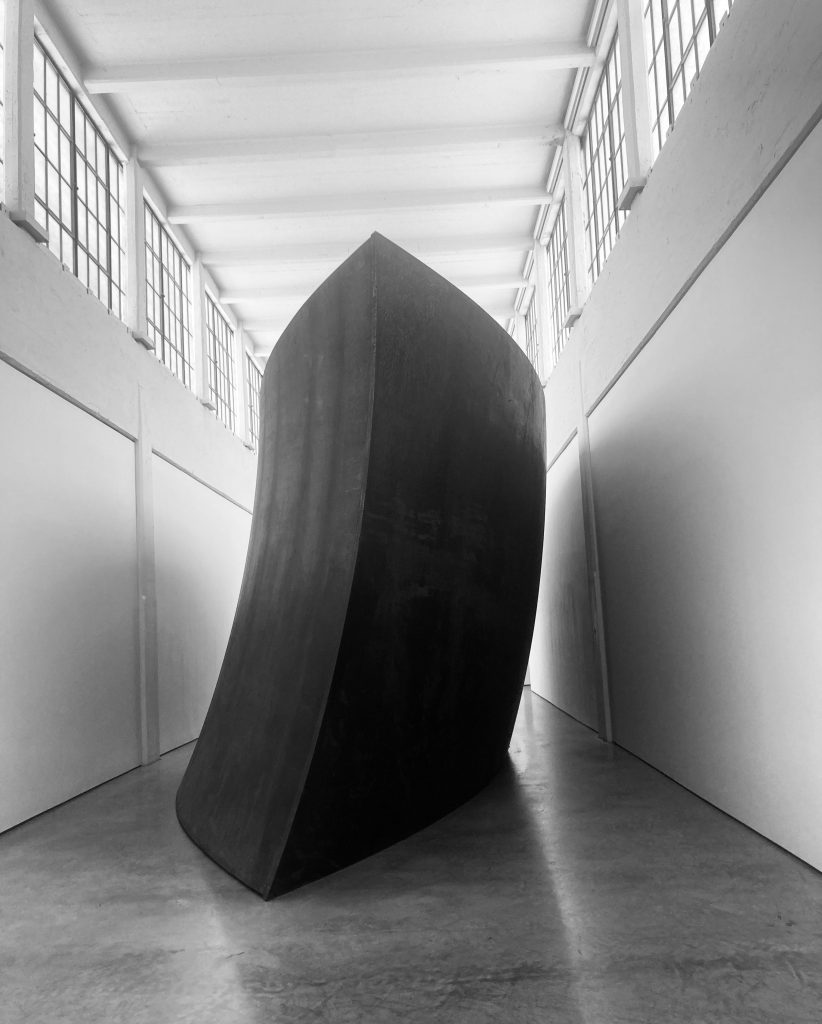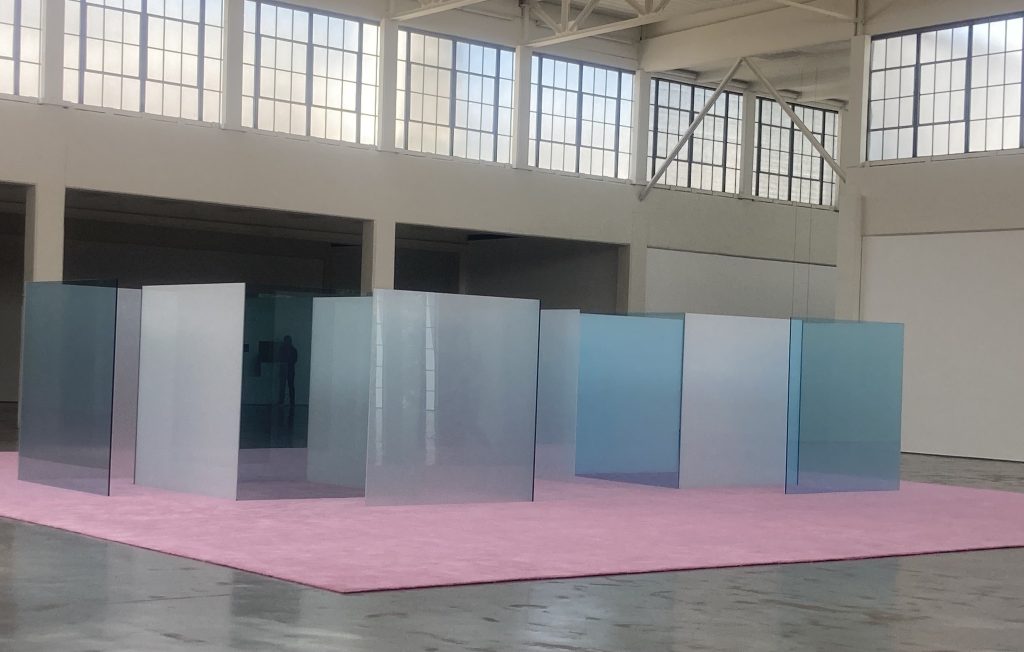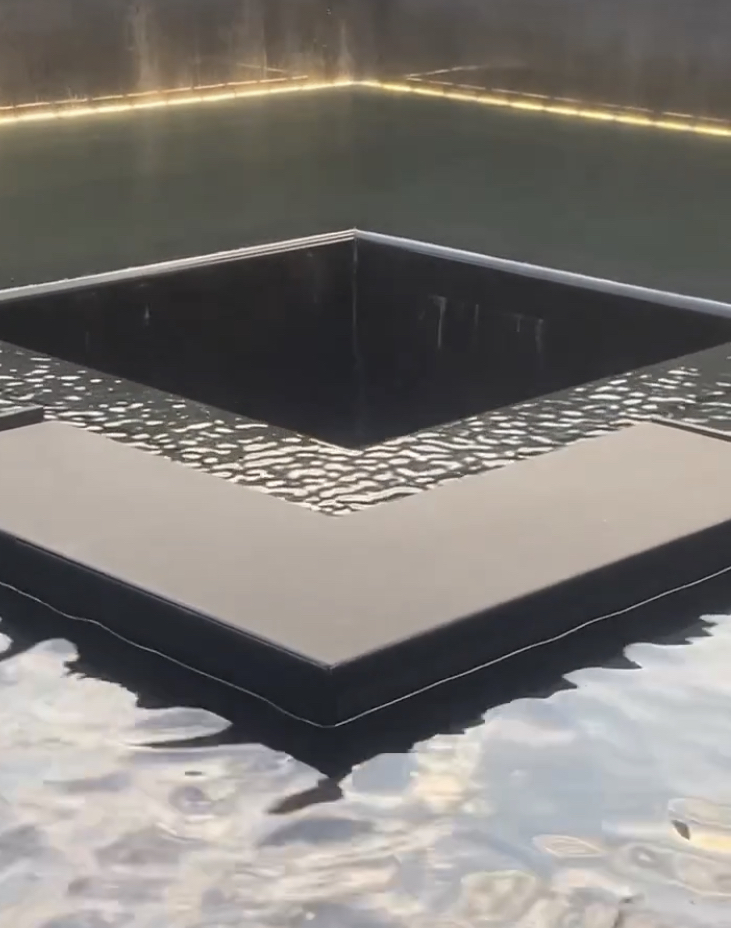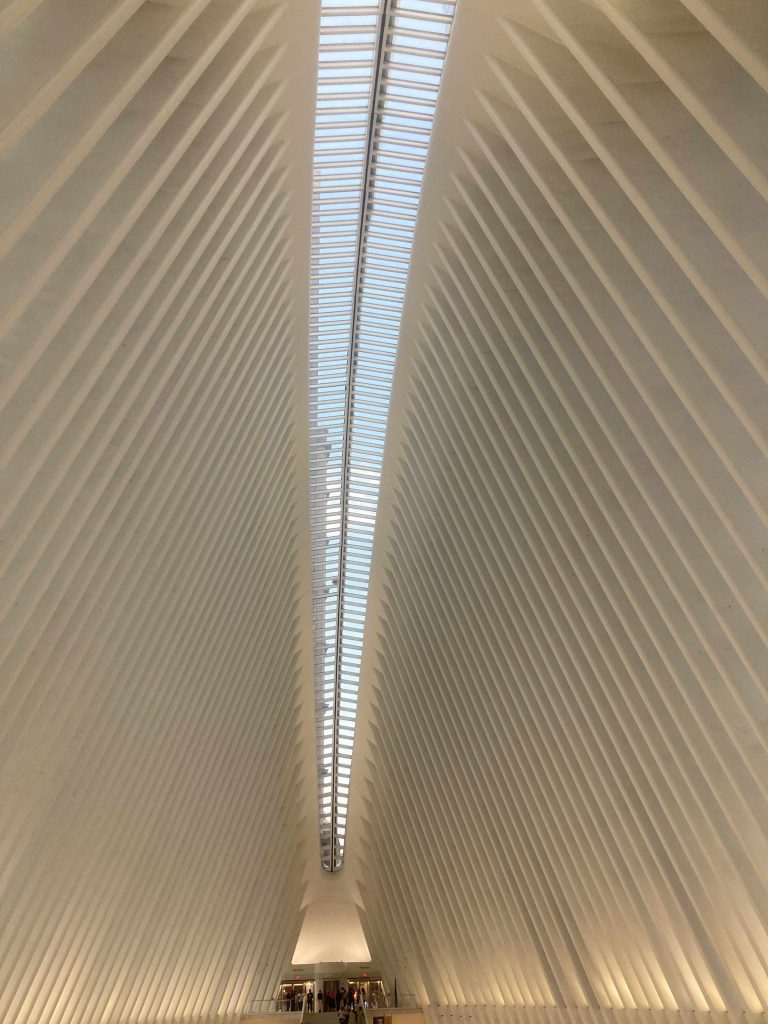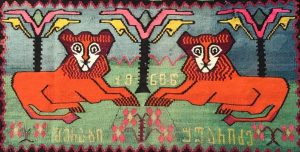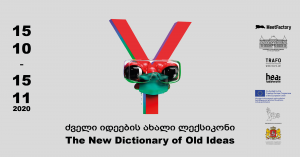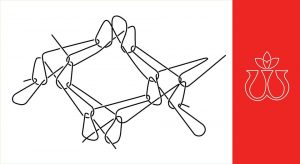In the rapid flow of time, the intensity of memories sometimes fades imperceptibly, but this is the moment when enough time has passed and recollection with original accuracy is still possible.
Which moment is more timely – when you write from the epicenter of impressions or when you remember? This time, the footage comes vividly to life with editing zeal. I follow the time intervals and open myself about 1 month ago, feeling a little confused and full of excitement because I have a 12 hour flight to New York. I have to cover such a long distance for the first time and I am a little restless and worried. We have detailed instructions from Suzanne (the head of the program) to each participant.
I never feel alone at the airport. The unity of people waiting nearby the gates, who are most controlling the time fills me with sadness and joy. I really won’t be alone, Alaina (curator from US), a resident of the Silk Museum is with me, we will fly together and exchange impressions before saying goodbye. She is going from my city, I’m going to hers, there’s something special about it…
I especially love long roads, because at this time long-postponed books are read with a different closeness. The distance is decreasing, the time is getting used to being close to the clear and infinite horizon, especially when you “swim” over the ocean for a full 8 hours. As my guide, I chose Simon Weil, a French philosopher for whom God is love. Love in the non-banal and self-centered sense of the word, but in the deep sense. With the greatest feeling of empathy, being on the verge of starvation, working with the workers in the factory, with an ascetic lifestyle, she improved the knowledge of the life full with love and equality completely uncompromising. Such an author translates the thinking process into sensations, and this is something that, causes fullness and looks like you have solved some secret.
The first days of New York are filled with a strange conventionality of trusting the world. An international group of curators from Kyrgyzstan, Bulgaria, Ukraine, Georgia and Azerbaijan from the global point of the world – the epicentre of culture, art and life, we share our local experiences, talking, walking and get to know each other. The first pleasant surprise that I have noticed while in New York is overcoming fear. I had a claustrophobic limitation and obsession that big skyscrapers cover all horizons, that I have to repel loss, confusion and stress all at once in this huge city. Nothing like it! An unusual hybrid from the East Village to the West Village, the landscapes of Brooklyn and Manhattan seen many times from the screen will give you a completely different open look. Everything is scaled, organic and beautiful! The exoticism admired by the tourist turned out to be inevitable for me – the transparent surfaces combined with the sky really prepare you for being in this city with an unusual lightness; In a city where you will find a large dose of lightness in the air, solidity under your feet, diversity around you, continuous dynamics, chaos and peace (together)…
A busy 10-day program with non-stop visits makes the intense days of New York’s hot summer burden with completely different gradations. Institutions, museums, exhibitions, leading art spaces, individual initiatives, artists and cultural managers, experiences and information alternate with each other and inspire far-sighted thoughts. Energetic conversations of colleagues on the way from meeting to meeting pleasantly intensify the moment. I want to capture the full meaning of the moment here most eagerly.
The sense of intimacy shared with time and moment can be found in many places: in the temporary neighborhood of Washington Square, where I rush to the nearby Bagel Pub every morning for a cappuccino; at the subway exit, where determining the right direction together with the group is the main task; For lunch, in casual and quick cafeterias or in the noise of the evening, which prepares you energetically for the next day.
We follow the remains of the train tracks on the high line and go to the Whitney Museum of American Art. Before introducing the current exhibitions, we had a presentation on Whitney’s exhibition policy, thus making the mission of the institution, which focuses on American art, even more visible. The main question, which is developed as a concept for various studies and exhibitions, considers the identity of American art as a central theme. Current exhibitions will spread this complex issue in many layers. Jaune Quick-to-See Smith’s solo show “Memory Map” is impressive. An artist, activist, and educator from New Mexico with her large-scale paintings and installations address environmental issues, Native American history and identity, collective memory, and the meaning of place and its history.
While browsing the exhibitions, I met my friend Data. We went up to the upper space of the Whitney and before visiting the next temporary exhibition, we were looking out of the window at one of the largest public space installations in New York by David Hammon. Installation is placed on the Hudson River by the initiative of the Whitney Museum. The installation, a brittle iron structure “grown” on the rippling surface of the water in place of a defunct warehouse at Pier 52, is inspired by Gordon Matta Clark’s famous work “End of the Day” and deals with the memory of a place, a place that was once was a hidden and safe gathering space for the LGBTQ+ community. Today’s piers are one of the most charming and colourful places in New York.
In the upper temporary exhibition gallery of the Whitney, Josh Kline’s large-scale, provocative installations, diluted with irony and a kind of revelation, come to us. The Philadelphia-based artist’s retrospective examines today’s most pressing sociopolitical issues—climate change, automation, disease, and the weakening of democracy—by presenting the people who make up the workforce. With such a warning, Kline makes us think about the growing crisis caused by the gigantic scale of consumption, while suggesting the relationship between science, art and social aspects.
Crossing of science and art with today’s current findings, artificial intelligence, dominates the MoMA exhibition space, immediately upon entering. I will move from floor to floor, where you can get to know the leading art trends of the 20th century directly at a close distance and through epochal connections. A tour specially organized for our group presents the history, collections and present of MoMA from a close perspective. The moving image generated by the ultra-modern AI of the first floor is contrasted with the unique documentation of the 30s, which we are viewing in one of the halls of the same space. New York’s early industrialisation, skyscrapers, bridges, streets, neighbourhoods – more than 200 photos from MoMA’s photography collection.
Together with the largest historical material, which changes every 6 months with the concept of dynamic collections. Among the current exhibitions, the large-scale retrospective of Georgia O’Keefe, a female artist who has been neglected for years and is now exceptionally valuable in American art, is exceptionally impressive. Georgia O’Keefe popularised 20th century modernism with her “explosive”, feminine and highly sensitive works. The synthesis of the given color, shape and feeling fills me with an impressive magnetism.
Historically, despite not a short experience of feminism, the retrospective display of female artists is gradually becoming a complex and intensive part of the exhibition policy in leading museum institutions. The Guggenheim Museum, whose main concept is to display non-figurative and experimental art, is the German-Venezuelan artist Gego (Gertrude Goldsmith). Gego’s sculptures, the spatial images created by her minimalistic forms are like a journey in weightlessness in the exhibition niches in the Guggenheim’s circular coils. “Measuring Infinity” – that’s the name of Gego’s solo exhibition, where the key ideas of the artist’s work, her characteristic transparency, brittle tension, are revealed in spatial dialogue and fastidious, detail-oriented transformations.
An optical and spatial experiment with time in the Guggenheim space, ephemeral connections continue in American artist Sarah Sze’s immersive multimedia exhibition “Timelapse”. The exhibition is one whole work and shares art, technology, science and poetry interchanging space with a large-scale format of movement, reflection of images and fluidity of energy. In a world where technological, virtual and physical realities have inextricably converged, this exhibition also examines these connections in its own way. While viewing the installation, the viewer also becomes an object of observation coexisting in the moving objects and images.
Museum spaces, with their different and defined directions, echo the public importance of art and current topics in many ways. The diversity, connections and the feeling of the pulsation of the present is intensively spread in the temporary exhibition spaces of the “New Museum”.
The crisis and apocalyptic moods of today, the biological qualitative representation of art and the processual reflection are impressively represented by the Korean artist Mire Lee. Her “Black Sun” with its kinetic sculptures, fabrics and self-dissolving mechanisms represents the states of decay, transience, dysfunction of the living organism. The exhibition’s ideological references to Julia Kristeva’s book of the same name, which explores melancholy and depression, were especially important for me.
The upper exhibition space of the “New Museum” presents large-scale installations of the Puerto Rican artist Pepon Osorio with a completely different aesthetic and theme. The retrospective exhibition “My Beating Heart” examines the personal stories of Latin American everyday life as a collective socio-political situation. The intimate spaces built in the exhibition space create intense emotional tension by replicating reality at a distance. Latin American TV-series and childhood memories bring me even closer to the exhibition. The situation created by observing and imitating the environment is completely focused on experience, it makes us think about the situations experienced by ordinary people in their daily life, their desires and values. The exhibition brings me closer to the edge of amazing empathy and reminds me of the need of care and a better future.
In my point of view, beyond the aesthetic pleasure, the power of art has a fundamental importance – the ability to transform, empathise and care for a better world. Beyond cynicism, destructive criticism, and lamenting the end of history, the transformation of time and moment is completely realistic. My belief in the better world was reinforced when I visited a non-profit artistic space in Harlem called Artistic Noise. Passion and enthusiasm are what this organisation is based on. Artistic Noise works with teenagers who are system involved or who are at risk of criminal experience. Active and preventive programs allow young people to explore their identity, experience and integrate into a safe environment for them.
The social and environmental perspective actively dominates artistic initiatives, exhibitions and public spaces in New York. The meeting with sTo Len, an artist of Vietnamese origin based in New York, was especially memorable in this regard. His eco vision explores the issues of garbage and cleaning with the synthesis of art and develops environmental protection initiatives. In the framework of the residency program at Department of Sanitation he studied the archive of this institution and later presented it in his solo exhibition. His experimental printmaking works with humor, light criticism, and a pop art aesthetic convey clear messages. Presented video archive – an amazing historical material and artistic research increases the visibility and importance of people working in the field of sanitation department. During my visit, another collaborative exhibition by sTo was presented together with the staff members of the Sanitation department at the Chinatown Mall. It became one of my best New York memories. The quiet Chinatown at night was a real antipode to the chaotic dynamics of New York.
Observing the public space and discovering art in such spaces was the main goal of this study visit. It was a unique experience being a while outside from the city centre, in the middle of nature, in New York Sculpture Park, at the Storm King Art Center. There green landscapes and man-made objects are in dialogue with each other. The nearby Dia Foundation, with its impressive exhibitions of large-scale installations by artists of the 1960s and 70s, is a conceptual concoction. Donald Judd, Lawrence Weiner, On Kawara, Louis Bourgeois, Richard Serra, Dan Flavin, Sol Lewitt, Gerhard Richter – that’s an impressive list of whose works you’ll find there. The space of the former factory, now converted into an exhibition space, presents site-specific art and is therefore a completely captivating place for contemporary art lovers. It should be noted that the Dia Foundation, like most of these institutions, operates with private and philanthropic donations.
Art is not far from life – this thought would follow me as a constant “highlight” while moving through the city streets. The existence of modern art and objects in public spaces is not based on formal-visual enrichment and is often an ideological statement loaded with a very clear social dimension. While walking the streets of New York, I intuitively feel an equal access to the surface and the depth. It seems to me that this is a characteristic phenomenon of New York, which makes this city the closest and at the same time the most untouchable. An outstanding work of public art, the 9/11 monument dedicated to the terrorist attacks of September 11, comes to my mind with an unforgettable and intense emotional connection.
This tragic date for the world reminds thousands of people of those who died on this day, the sound of the water pouring into the black cube-shaped fountain disappearing into the bottomless depth intensifies the complex feelings of openness, hope and pain. I feel deep emotional tension when I think about the tragedy, but the echo of the water still calls to me the hope that a better future in the world is inevitable. Now, when I look back on the impressions I received while viewing this monument, I am reminded of the phrase of the US contemporary writer Maggie Nelson from “Argonauts”:
“We must return to small steps to freedom, small practices, and not dream of one big, grand, universally liberating night.”
Step by step, a transformed liberated mind brings me back to emotions. The recollection frames are still messy, the difficult task is to recall the emotions chronologically. From complete silence, out of nowhere, John Cage’s atonal music can be heard with abstract excitement, the dynamics of shape, color and endless intersecting lines… My mind is now in the Naguchi Museum – the sudden rain, the tones of the experimental music performed that day, and the objects manipulated by Naguchi’s flawless imagination conjure up an impressive spectrum in my mind. In this game with memory, one thing is undeniable to me, New York is actually the city on earth where parallel lines intersect at infinity. I borrowed this iconic phrase from the legendary American lady, rock star, writer and activist, Patti Smith. On the way back to Tbilisi, I “follow” her Woolgathering…
M. Shergelashvili
P.S. The text is an attempt to tell you about important places, spaces, authors and events of New York through personal memory, reminiscence and diary-like chronicle. Despite being based on personal memories, the text is selective in its limited format and cannot restore many important moments, private or public meetings and impressions. The visit to New York was carried out as part of the CEC ArtsLink study fellowship program, July 2023, in which I participated as a curator of the State Silk Museum and as an independent researcher. CEC ArtsLink has been a partner of the State Silk Museum since 2018.
